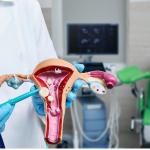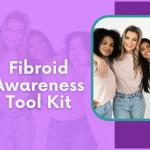
Uterine fibroids are a very common health condition. Although a wide range of estimates exist, research has shown that millions of women are affected by fibroids in the U.S. each year. One study indicates that approximately 26 million women between the ages of 15 and 50 have uterine fibroids. Of these women, 15 million are likely to experience symptoms or related health concerns. Fibroids are the most common type of non-cancerous growth that develops in the reproductive tract. Although not usually considered dangerous, they can cause painful and inconvenient symptoms. Depending on their size and location, fibroids can also impact fertility and cause damage to surrounding organs.
If you are experiencing symptoms like heavy periods, severe cramps, frequent urination, or low energy, you may wonder if you have fibroids. Since there are many myths and misconceptions about fibroids, you may also feel scared, stressed, or worried. We recommend visiting your doctor or a fibroid specialist for a full evaluation. During your appointment, they can also help set your mind at ease.
We want you to know that if you are diagnosed with fibroids, you can still live a happy, fulfilling life. When symptoms begin to impact career, relationships, or self-esteem, we generally recommend treatment. Fortunately, a range of safe and effective treatment options is available.
Below, we provide information about the prevalence of fibroids to help women suffering with fibroids feel more confident about asking questions of their healthcare providers and seeking available treatment options.
How Common Is It to Get Fibroids?
Fibroids, also known as uterine leiomyomas or myomas, are quite common, particularly among women of reproductive age. However, not all women with fibroids experience symptoms; many remain asymptomatic and are often diagnosed incidentally during routine pelvic exams or imaging studies for other reasons. Factors such as age, family history, ethnicity, and hormonal levels can influence the likelihood of developing fibroids, with African-American women being at a higher risk. Despite their prevalence, fibroids are generally benign and can be managed through various medical treatments, such as Uterine Fibroid Embolization offered at USA Fibroid Centers, if they cause significant symptoms.
Prevalence of Uterine Fibroids
Fibroids are most prevalent in women who are in their childbearing years. We also know that women of African-American descent are disproportionately affected.
Fibroids prevalence in the United States is high: up to 70% of women in the U.S. have uterine fibroids. This prevalence is higher than other conditions in women, such as hypertension (high blood pressure), breast cancer, or ovarian cancer.
Why Are Fibroids So Common?
Unfortunately, we don’t entirely understand why uterine fibroids are so common. More research is needed to answer this important question. What we do know is that certain risk factors, such as being of African American descent, age, and hereditary factors, can influence the likelihood that a woman will get fibroids.
Some of the lifestyle factors that may influence fibroid growth include:
- Frequently eating red meat
- Not getting enough fruits or vegetables
- Regularly drinking alcohol or caffeine
- Not drinking enough water
- Obesity
- High blood pressure
- Vitamin D deficiency
- Smoking
Fibroids have been linked to genetic changes, hormones, other growth factors, and a substance known as Extracellular Matrix (ECM). We also know that there are hereditary factors, so if you have a close relative with fibroids, you are more likely to develop them. Another contributing factor is age, as fibroids occur most often during a woman’s childbearing years.
If you think you may be at risk, or have questions about the causes of fibroids, our experienced fibroid specialists are available to talk with you. We provide a minimally invasive, outpatient treatment called Uterine Fibroid Embolization (UFE).
Request a UFE Consultation With USA Fibroid Centers Today
If you are curious about the prevalence of fibroids and looking for fibroid facts, we want you to know our empathetic specialists are here to answer all your questions. Our doctors are dedicated to providing patients with information about all available treatment options and a personalized treatment plan, so you can make the best choice for your fibroid care and well-being.
Many women with fibroids avoid the doctor because they believe a hysterectomy, or the complete surgical removal of the uterus, is their only available treatment option. This is no longer the case. UFE can shrink fibroids and alleviate symptoms, while leaving your uterus fully intact. UFE is a non-surgical procedure that does not require stitches, a hospital stay, or a lengthy recovery. Most of our patients go home the same day and are able to get back to their daily routine within one to two weeks.
Even though you may have fibroids, we want you to understand that you have options. After getting relief from your fibroid symptoms, you can experience newfound freedom and improved quality of life. We invite you to talk to one of our fibroid specialists. For your convenience, we now offer telemedicine appointments.



